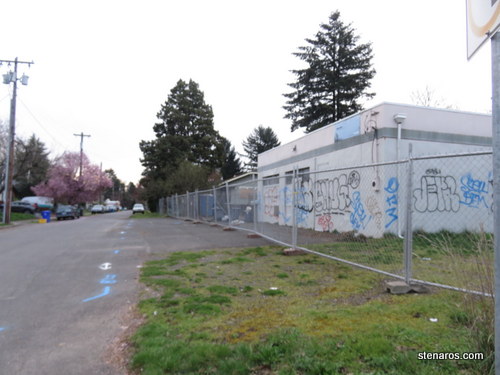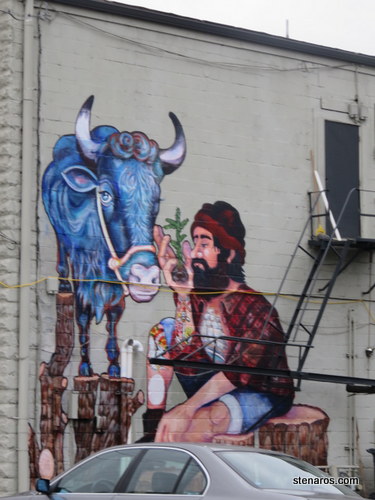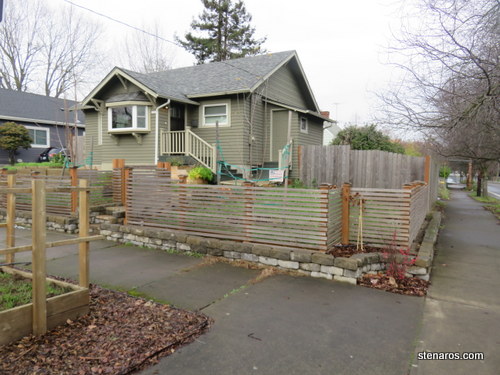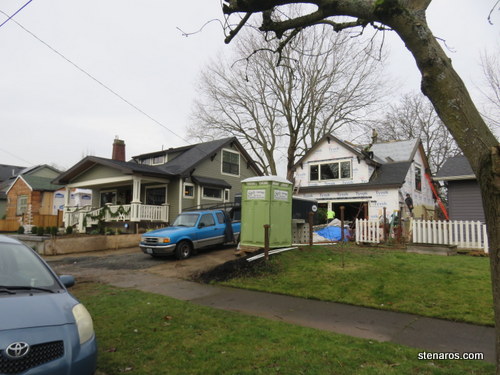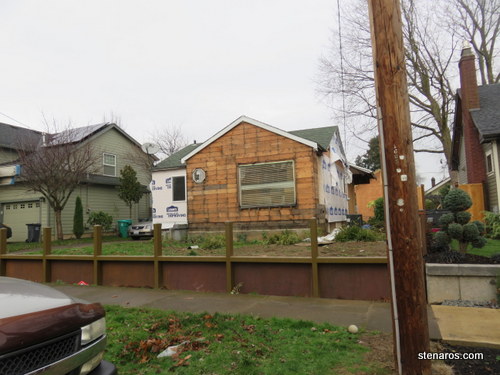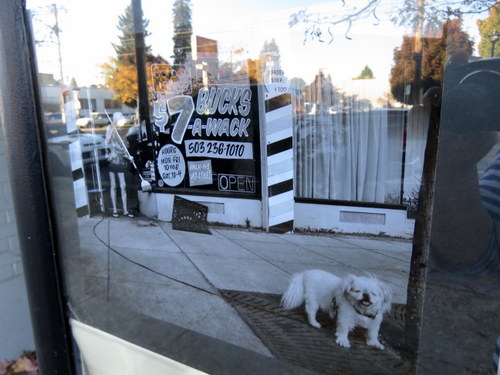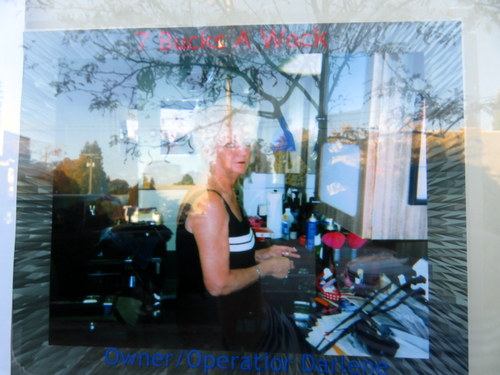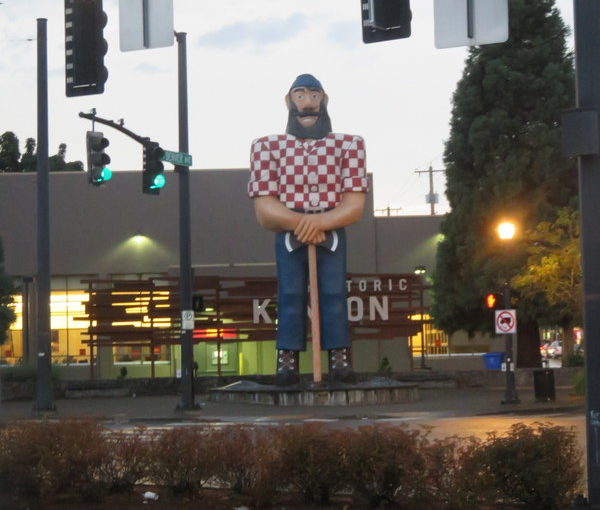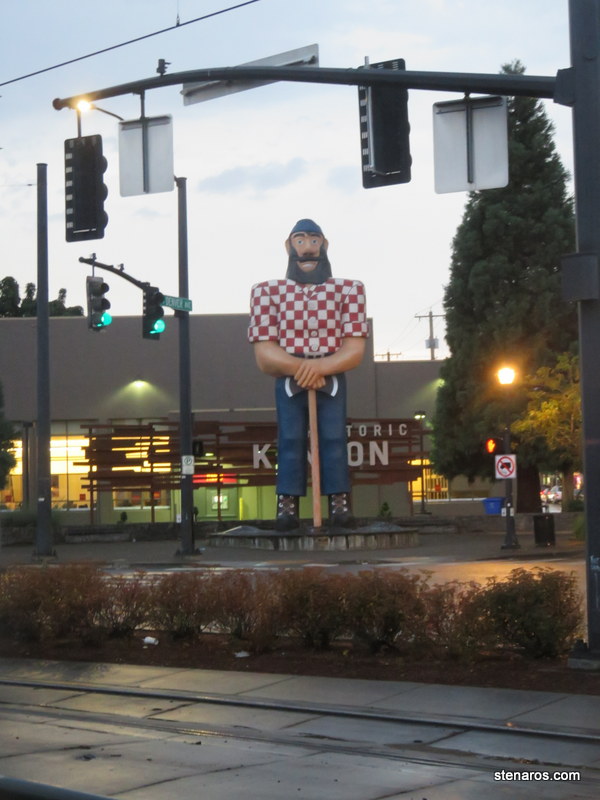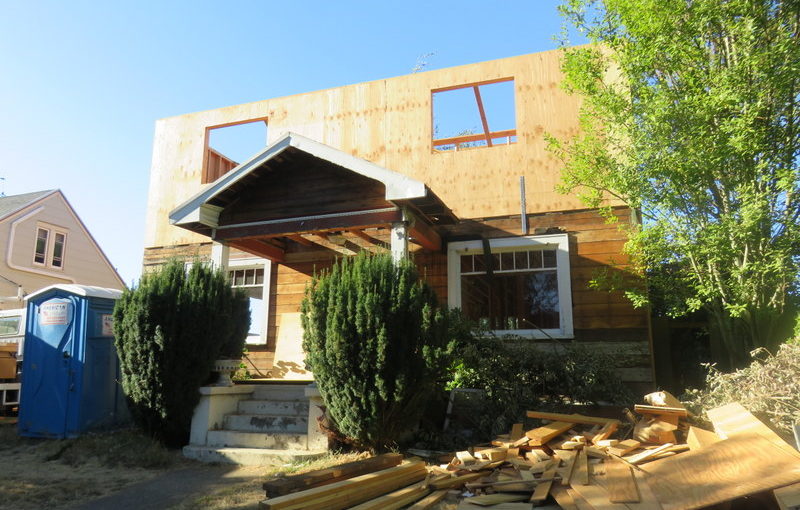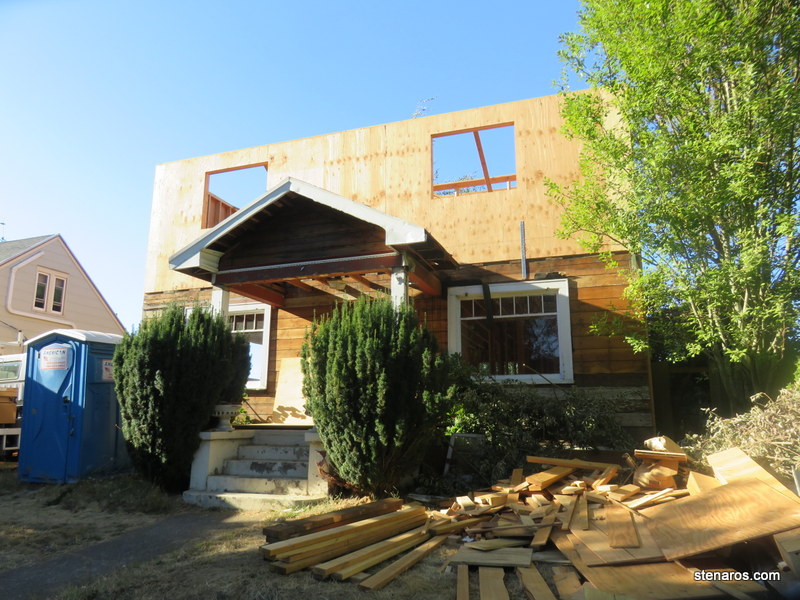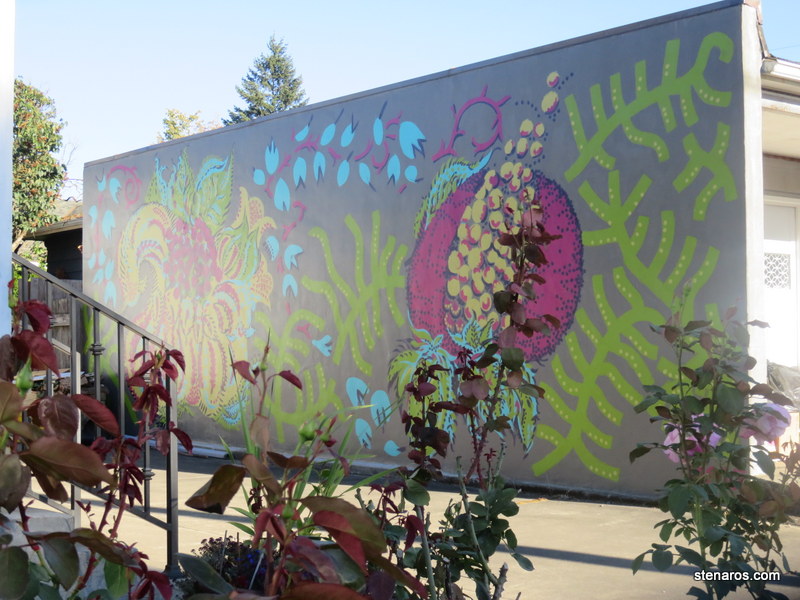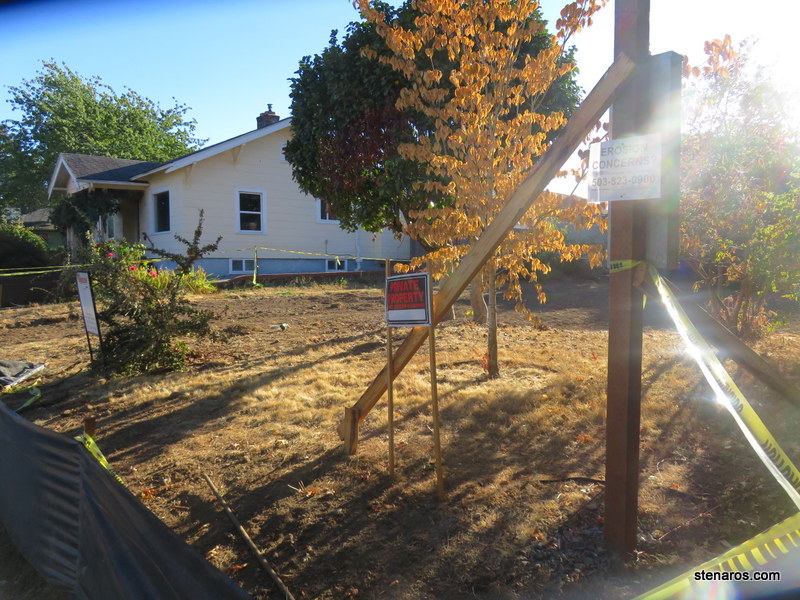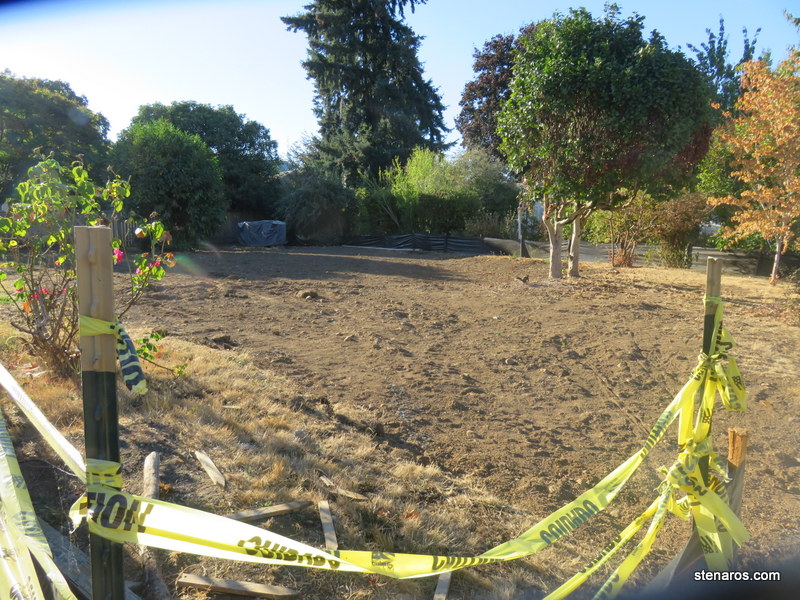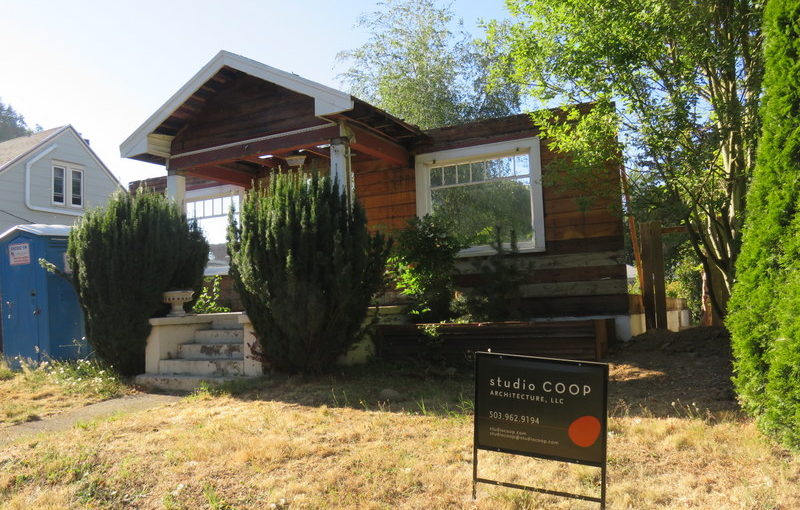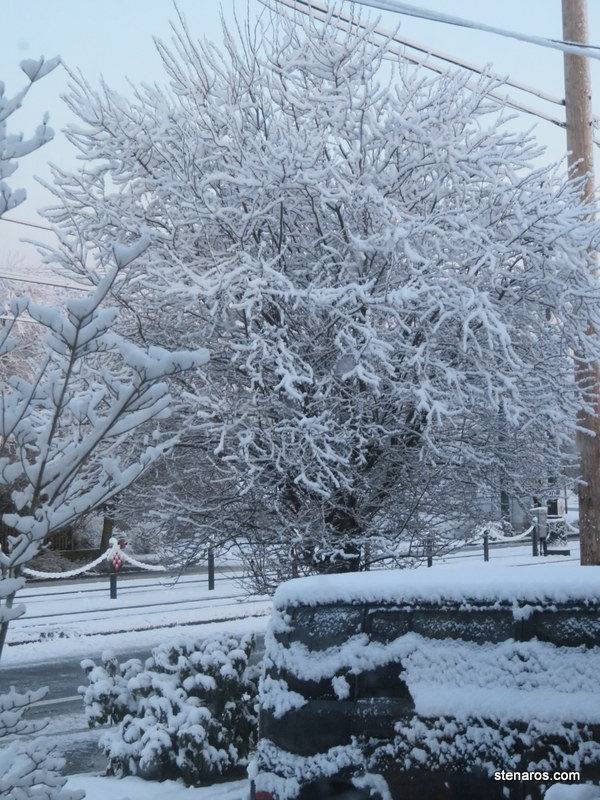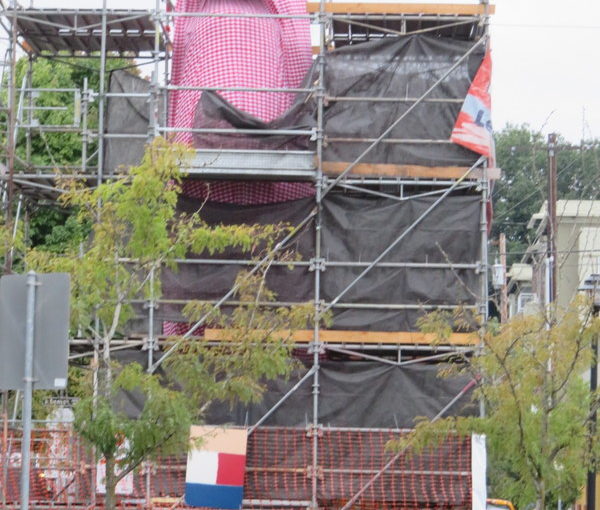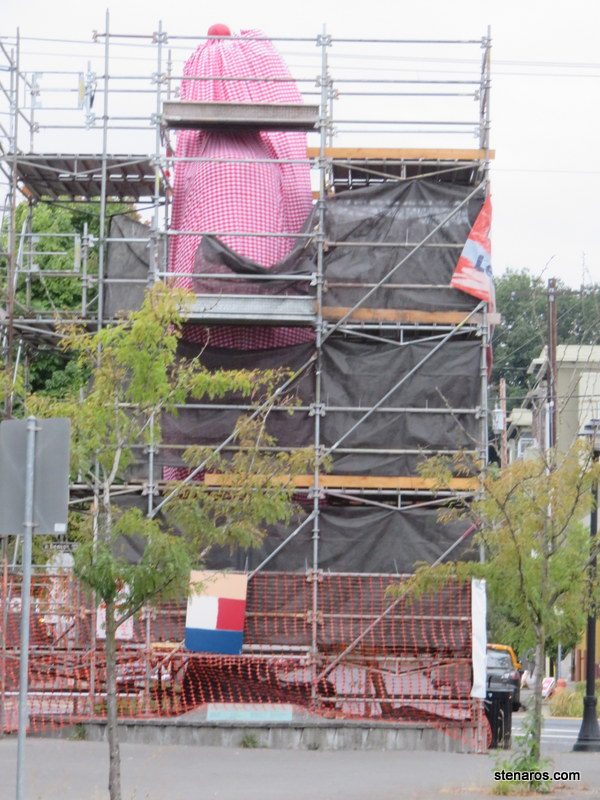The orange sign was hanging on the gate outside the door of the church near my house. Because that church is within 300 yards of a demolition, it got a warning.
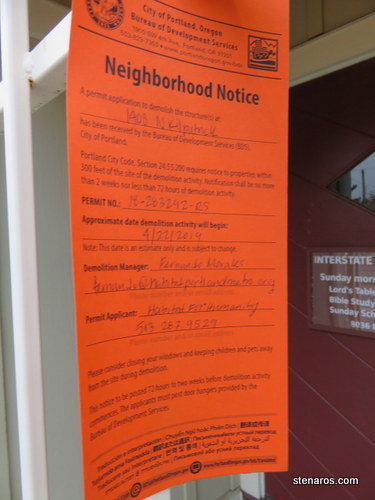
I felt very sad, because I thought this beautiful house had escaped the demolition fate. So I took a bunch of pictures.
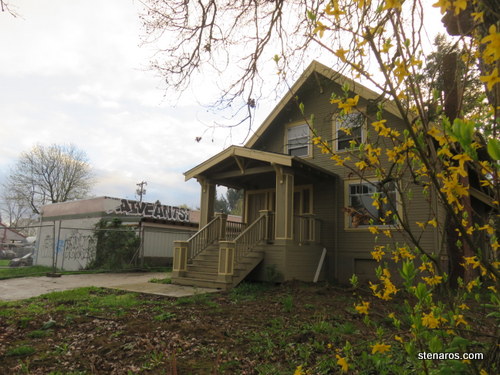
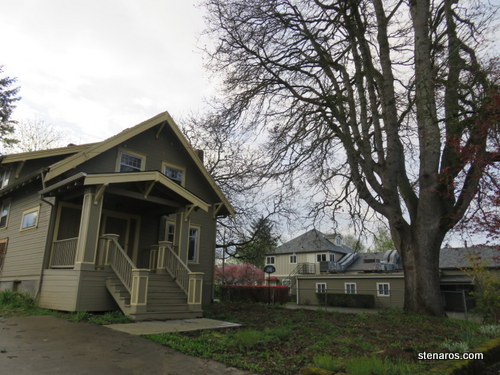

And then I eventually figured out that the address said Kilpatrick street, not Interstate. Somehow, this house has survived! You can see the temporary chain link fence where they are cutting off the backyard.
Unfortunately, the smaller house around the corner is the one that will be demoed, along with the building on the corner. You can see a picture of these buildings by going to this post. And I suppose that means the lilac tree will also be on it’s way out. I hate to lose a good lilac tree.
You can see what might be coming by reading this post.

